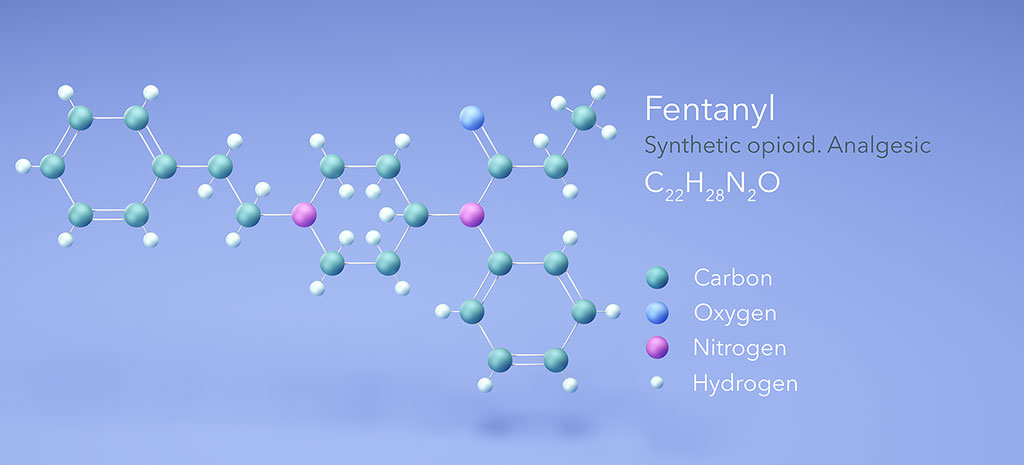
Pain and Opioid Painkillers: How Opioid Medications Affect Pain and the Body
Pain is a universal human experience, and for millions, pain and opioid painkillers have become a common issue. While these medications offer powerful relief, their

Fentanyl is an exceptionally potent synthetic opioid, meticulously engineered to address severe and chronic pain that other medications can’t manage effectively. Medical professionals prescribe it with great caution, recognizing its significant strength, which far surpasses traditional opioids like heroin and morphine.
Developed in the 1960s, Fentanyl was initially used as an anesthetic and pain relief solution in medical settings. Its incredible potency—50 to 100 times more powerful than morphine—makes it essential for managing cancer pain and post-surgical care. However, due to its high potential for dependence and abuse, fentanyl is tightly regulated and reserved for cases where other pain relievers have proven ineffective.
Fentanyl works by binding to opioid receptors in the brain, which control pain and emotions. By amplifying dopamine levels, it creates euphoria and relaxation while significantly reducing pain sensation. This powerful effect, beneficial for pain relief, also contributes to fentanyl’s high potential for addiction and abuse.
Fentanyl comes in various forms, including patches, lozenges, nasal sprays, and injectables, allowing doctors to tailor pain management to individual patient needs. The transdermal patch, for example, provides a slow release of the medication over time, ideal for chronic pain management. Understanding the different forms of fentanyl is crucial for ensuring proper and safe administration.
Fentanyl’s potent effect on pain also accounts for its dangers. Its high potency means that even a tiny amount can lead to overdose and potentially fatal respiratory depression. This risk increases when fentanyl is illicitly manufactured and used recreationally, often mixed unknowingly with other drugs, magnifying its lethal potential.
Fentanyl’s role in modern medicine is undeniable, offering critical pain relief where other opioids fall short. Yet, its potency demands respect and caution. Understanding fentanyl’s power, its proper use, and the risks associated with misuse is essential. With informed and cautious use, fentanyl can be a valuable component of pain management, balancing its benefits against its potential for harm.
Need Expert Advice on Fentanyl Detox?
For fast support, please dial
1-800-423-2482.
Email us confidentially for personalized guidance.
In recent years, the opioid crisis has escalated into an epidemic, largely fueled by the surge in fentanyl overdoses. This synthetic opioid, known for its extreme potency, has become a critical concern. Even minuscule doses, often imperceptible to the eye, can lead to fatal outcomes. The key to combating this crisis lies in heightened awareness and prompt, decisive action.
Fentanyl’s role in the overdose epidemic cannot be overstated. Its ability to overpower the system with such small quantities has led to a dramatic increase in overdose cases, affecting communities across the globe. The CDC reports that synthetic opioids, primarily fentanyl, were involved in over 70% of opioid-related overdose deaths in 2021. This rise underscores the urgent need for education on the signs of an overdose and the immediate steps to counteract its effects.
Swift recognition of fentanyl overdose symptoms is crucial. These signs often manifest rapidly and can escalate quickly to life-threatening conditions. Being aware of the following symptoms can make a significant difference:
Naloxone has emerged as a beacon of hope amid the overdose crisis. This life-saving medication can reverse the effects of an opioid overdose, including those caused by fentanyl, when administered in time. Its availability and use have become pivotal in the immediate response to overdose incidents. Carrying naloxone and knowing how to use it can literally mean the difference between life and death.
Efforts to increase the accessibility of naloxone have gained momentum, with many regions making it available without a prescription. Training on how to administer naloxone is now more widespread, empowering everyday citizens to act decisively in an overdose situation.
The battle against the overdose epidemic, particularly with fentanyl, requires a collective effort. Education on recognizing overdose symptoms, the widespread availability of narcan, and readiness to use it are all critical components in this fight. Together, these measures form a powerful defense, capable of saving lives and combating the devastating impact of opioid overdoses.
Fentanyl, significantly more potent than many other opioids, is carefully regulated for medical use, typically reserved for managing severe pain in controlled settings. However, its potency has led to widespread misuse and a surge in overdose fatalities, making it crucial to understand the inherent risks of taking fentanyl, whether prescribed or illicitly obtained.
Fentanyl’s potency makes overdosing easy, especially for those not used to opioids. Overdose signs include pinpoint pupils, confusion, cold skin, blue lips, slowed breathing, and unconsciousness. Treat overdoses immediately with naloxone to prevent death.
Fentanyl quickly hooks users, leading to tolerance, dependence, and addiction. This cycle can ruin health, relationships, jobs, and finances.
Drug dealers often mix fentanyl with other drugs like heroin or cocaine, raising overdose risks. Many don’t know they’re taking fentanyl, leading to unexpected overdoses.
Long-term fentanyl use can harm the lungs, gut, and mental health, causing depression and anxiety. It weakens the immune system, too.
Using, having, or selling fentanyl without a prescription is illegal. It can lead to jail, fines, and a criminal record. Addiction stigma also causes social isolation and affects personal and professional life.
Fentanyl’s dangers are serious, affecting health, law, and society. Use it with caution, follow medical advice closely, and get help for addiction right away. Knowing and addressing these risks can save lives and prevent misuse.
The journey through fentanyl dependency involves significant health risks that extend far beyond immediate addiction concerns. Chronic use of this potent opioid leads to a cascade of long-term health consequences, affecting nearly every aspect of an individual’s well-being.
Long-term fentanyl use severely impacts respiratory health. Fentanyl, like other opioids, depresses the respiratory system, reducing the urge to breathe. Over time, this can cause chronic respiratory issues, such as reduced lung capacity and an increased risk of pneumonia and other respiratory infections.
The psychological effects of prolonged fentanyl use are profound. Users may experience a range of mental health struggles, from depression and anxiety to more severe conditions such as opioid-induced psychosis. The chemical changes in the brain associated with long-term opioid use alter mood regulation, stress response, and overall mental health stability, making recovery and mental health management more complex.
Chronic fentanyl use also takes a toll on the immune system. Opioids suppress immune function, making the body more susceptible to infections and illnesses. This weakened immune response compounds other health issues, creating a vicious cycle of deteriorating health and increased medication dependency for symptom management.
Acknowledging and addressing the long-term health consequences of fentanyl use is essential for recovery. The path away from fentanyl dependency involves a multifaceted approach, incorporating physical, psychological, and lifestyle changes. This comprehensive strategy ensures a balanced and healthy recovery.
By understanding the extensive health impacts of chronic fentanyl use, individuals can better prepare for the challenges of recovery and work towards a healthier future.
Speak With a Fentanyl Addiction Specialist
Exceptional Care & Better Outcome. Get In Touch With Us Today!
Fentanyl addiction’s swift and severe grip demands a comprehensive and medically informed approach to treatment. Breaking free from this addiction is fraught with challenges, especially during the withdrawal phase. Without adequate medically-assisted detoxification, withdrawal can be extremely uncomfortable and potentially dangerous.
Attempting to detox from fentanyl without medical assistance is risky. Withdrawal symptoms can range from severe discomfort to life-threatening conditions, making inpatient medical monitoring during detoxification crucial. This level of care is essential to minimize the risks of relapse and the possibility of a fatal overdose. The withdrawal phase is a vulnerable time for individuals fighting addiction. Adequate medical supervision ensures that this process is as safe and manageable as possible.
Individuals with a history of opioid dependence often face various health challenges, both known and unknown. These can complicate the detoxification and recovery process, highlighting the need for close medical supervision. An individualized treatment plan, tailored to address these specific health concerns alongside addiction, is critical in providing effective care and support during recovery.
Waismann Method, based in Southern California, has led the field of medical rapid opiate detoxification for over 26 years. Our unwavering commitment to advancing detox and rapid detox techniques ensures we remain at the forefront of addiction treatment. Rooted in a deep dedication to the well-being of opiate-dependent patients, our approach is defined by:
Overcoming fentanyl addiction requires more than just the will to recover; it necessitates a structured, medically-informed approach addressing both the physical and psychological facets of addiction. The Waismann Method provides individuals battling opiate dependence with the highest standard of detoxification and recovery services. Our treatment pathway includes medically-assisted detoxification, close medical supervision, and individualized treatment plans, helping individuals navigate the challenging journey from addiction to recovery with confidence and support.
Patients receive top-notch medical care and personalized attention from our quadruple board-certified medical director. Our accredited facility and private, exclusive recovery retreat offer a comprehensive and confidential healing experience.
To learn more about our premier rapid fentanyl detox solutions, call us today at 800-423-2482.
Opioids Unveiled: Understanding Addiction, Treatment, and the Journey Beyond

Pain is a universal human experience, and for millions, pain and opioid painkillers have become a common issue. While these medications offer powerful relief, their

The Latest on New Opioid Prescription Laws As of 2025, states across the U.S. including Florida, Tennessee, and Michigan have enacted and updated New Opioid

Oxycodone, is a powerful prescription opioid used to manage moderate to severe pain. Whether you’re a patient, a healthcare provider, or someone facing a drug
Get Newsletter Updates from Waismann Method®
"*" indicates required fields
DISCLAIMER: The text presented on this page is not a substitute for professional medical advice. It is for your information only and may not represent your true individual medical situation. Do not hesitate to consult your healthcare provider if you have any questions or concerns. Do not use this information to diagnose or treat a health problem or disease without consulting a qualified healthcare professional. Be advised that Opiates.com articles are derived from various sources and may not reflect your own country’s regulations.